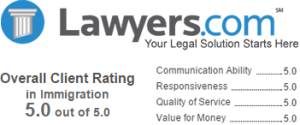President Biden got rid of most of former President Trump’s immigration travel bans.
On September 20, 2021, it was announced that 18-month ban on travel by visitors from 33 countries, including members of the European Union, China, Iran, South Africa, Brazil and India would end in November 2021. Foreign travelers will need to show proof of vaccination before boarding and a negative coronavirus test within 3 days of coming to the U.S.
On October 1, 2020, a Federal Judge partially blocked the Administration’s June Travel Ban on some temporary work visas, but only for certain employers.
On April 23, 2020, President Trump’s Executive Order Suspending the issuance of green cards abroad went into effect. Please see Executive Order Suspends US Immigration For 60+ Days – Who Is Exempt?
On June 22, 2020, the President extended the 60-day travel ban until December 31, 2020 and expanded it to ban persons, and their spouses and children, from getting H-1B, H-2B, J and L visas. On June 29, the June 22 travel ban was amended to narrow the exemptions to the ban..
On July 17, 2020, the State Department published a list of exceptions to the President’s latest travel bans.
In a Presidential Proclamation dated January 31, 2020, the Administration added 6 countries to the Travel Ban – Nigeria, Tanzania, Sudan, Myanmar, Eritrea and Kyrgyzstan. The expanded ban went into effect on February 21, 2020..
Citizens of most of the newly added countries are not barred from getting temporary visas to visit, study or work in the United States. However, they will face additional scrutiny when applying for nonimmigrant visas.
However, many are now barred from obtaining green cards abroad, although some are only prohibited from getting immigrant visas through the diversity lottery. They may apply for waivers although only 6% of waiver applications are being granted.
In 2021, Presiden
Below is a chart which identifies who is affected by the Travel Ban:
| Country | Nonimmigrant Visas | Immigrant and Diversity Visas |
|---|---|---|
| Iran | No nonimmigrant visas except F, J and M visas | No immigrant or diversity visas |
| Libya | No B-1/B-2 entries, and B-1/B-2 visas | No immigrant or diversity visas |
| North Korea |
No nonimmigrant visas | No immigrant or diversity visas |
| Syria | No nonimmigrant visas | No immigrant or diversity visas |
| Venezuela | No B-1, B-2 or B-1/B-2 visas of any kind for officials of the following government agencies Ministry of Interior, Justice, and Peace; the Administrative Service of Identification, Migration, and Immigration; the Corps of Scientific Investigations, Judicial and Criminal; the Bolivarian Intelligence Service; and the People’s Power Ministry of Foreign Affairs, and their immediate family members. | No restrictions |
| Yemen | No B-1/B-2 entries, and B-1/B-2 visas | No immigrant or diversity visas |
| Somalia | No immigrant or diversity visas | |
| Eritrea | No immigrant or diversity visas except as special immigrants whose eligibility is based on having provided assistance to the US Government | |
| Kyrgyzstan | No immigrant or diversity visas except as special immigrants whose eligibility is based on having provided assistance to the US Government | |
| Myanmar (Burma) | No immigrant or diversity visas except as special immigrants whose eligibility is based on having provided assistance to the US Government | |
| Nigeria | No immigrant or diversity visas except as special immigrants whose eligibility is based on having provided assistance to the US Government | |
| Sudan | No diversity visas | |
| Tanzania | No diversity visas |
History of the Travel Ban
Early in 2017, President Trump issued a travel ban (TB) on individuals from Middle Eastern countries. The first travel ban temporarily barring 7 predominately Muslim countries from entering the US was quickly blocked by a Federal Judge in Seattle. Trump appealed the decision, but the judge’s order was upheld.
This led to Trump’s 2nd travel ban, which was a revised version of the first. The original executive order applied to current visa holders from the 7 countries, but the revised version only applied to those who had not yet been issued a visa. It only applied to 6 countries, taking Iraq off the list. The ban on Syrian refugees was no longer permanent and Christians were not given preference in being granted refugee status.
Although the 2nd travel ban was struck down by the US Courts of Appeals in both the 4th and the 9th Circuits on June 26, 2017, the Supreme Court reinstated parts on the ban and agreed to hear the government’s appeals of the lower courts decisions.
On September 24, 2017, less than 3 weeks before the Supreme Court was scheduled to hear oral arguments regarding his 2nd TB, President Trump issued his 3rd ban. On December 3, 2017, the Supreme Court allowed it to go into effect on a temporary basis. The Supreme Court approved Travel Ban 3.0 on June 26, 2018.
On January 31, 2020, the Administration expanded the Ban by adding another 6 countries in Africa and Asia. The expanded Travel Ban went into effect on February 21, 2020.
Travel Ban 3.0
 On September 24, 2017, President Trump issued a 15-page order which initially restricted immigration from the following 7 countries: Iran, Libya, Syria, Yemen, Somalia, Chad and North Korea. In addition, Iraqi citizens and government officials and their families from Venezuela will face certain travel restrictions and/or heightened scrutiny when attempting to enter the United States. The travel ban became effective on October 18, 2017.
On September 24, 2017, President Trump issued a 15-page order which initially restricted immigration from the following 7 countries: Iran, Libya, Syria, Yemen, Somalia, Chad and North Korea. In addition, Iraqi citizens and government officials and their families from Venezuela will face certain travel restrictions and/or heightened scrutiny when attempting to enter the United States. The travel ban became effective on October 18, 2017.
The Executive Order which implemented Travel Ban 3.0 provides that the State Department and the Customs and Border Protection (CBP) can issue waivers to persons from the affected countries who apply for a visa to come to the US, but only if they meet each of the following criteria:
- Denying entry would cause the applicant undue hardship;
- Entry would not pose a threat to national security or public safety; and
- Entry would be in the U.S. national interest.
To date, waivers have been granted to less than 2% of all visa applicants from the banned countries.
- Trump Administration Adds Six Countries to Travel Ban (1-31-20)
- Only 6 percent of those subject to Trump travel ban granted U.S. waivers (4-04-19)
- Internal documents show how hard it is for some immigrants to get a travel ban waiver (9-21-18)
- State Department Releases Internal Guidance for TB Waivers
- Trump’s Travel Ban: How It Works and Who Is Affected (7-01-18)
- Supreme Court Rules in Favor of TB 3.0 (6-26-18)
- Oral Arguments on TB before the Supreme Court (4-25-18)
- Class Action Lawsuit Challenges Trump’s TB Waiver Process: Vazehrad v. Trump (3-13-18)
- Visa Waivers Rarely Granted under Trump’s Latest TB (3-06-18)
- Supreme Court Allows Trump TB to Take Effect (12-03-17)
- Supreme Court Cancels Hearing on Previous Trump TB (9-25-17)
- New Order Indefinitely Bars Almost All Travel From Seven Countries (9-24-17)
Travel Ban 2.0
- Supreme Court Will Hear TB Case & Allows Parts to Go Ahead (6-26-17)
- 9th Circuit Deals Trump TB Another Defeat (6-12-17)
- Washington State Asks Judge to Block New Trump TB (3-09-17)
- Trump Signs New TB, Exempts Iraq (3-06-17)
- Q&A: Protecting The Nation From Foreign Terrorist Entry To The United States (3-06-17)
- How Trump’s Merit-Based Immigration System Might Work (3-01-17)
- Trump Says He is Open to Legal Pathway for Undocumented Immigrants (2-28-17)
- Trump’s New TB Will Exempt Existing Visa Holders (2-28-17)
Travel Ban 1.0
- 9th Circuit’s Decision on Trump’s Travel Ban (2-9-17)
- Appeals Court Skeptical About Trump’s TB (2-7-17)
- Live Stream Oral Arguments on Trump’s TB Before the 9th Circuit Court of Appeals (2-7-17)
- Trump’s Appeal in the 9th Circuit Court for his Travel Ban (2-7-17)
- State of Washington’s Response to Trump’s Executive Order (2-7-17)
- Justice Dept Urges Appeals Court to Reinstate Trump’s TB (2-6-17)
- Where Trump’s TB Stands (2-5-17)
- Appeals Court Refuses to Restore Travel Ban Yet (2-5-17)
- Trump Appeals Travel Ban Ruling (2-4-17)
- Court Temporarily Blocks Trump’s Travel Ban (2-3-17)
- Temporary Restraining Order on President Trump’s Travel Ban (2-3-17)
- Trump Signs Executive Order on ‘Extreme Vetting’ for Immigrants (1-27-17)








